The Flow of Fabric: Carolina Caycedo’s Textile Art
From vast, cascading curtains of silk to hand-woven fishing nets, contemporary artist Carolina Caycedo has worked with a wide range of fabrics and textiles, deftly interweaving their tactile properties into her conceptual practice. Her most recent art is an examination into the social divisions and oppressions surrounding the privatization of water, working closely with communities affected by such issues, and she likens the fluid, flowing properties of various fabric types to bodies of water. She says in her practice she is aiming at “developing relationships with the human and nonhuman entities of a particular place… not keeping an objective distance with my case study, but actually getting implicated in it.”
Caycedo was born in London to Colombian parents. Being raised in an artistic environment left its mark – she explains her earliest memory of art was: “… as a little girl, my grandmother’s and her sister’s paintings. They were six sisters, all of them artistic in their way, one of them a poet; they always played music in family reunions. That influenced me to become a vocal person, to understand that my voice as a woman is very valid.”
After training as an artist in London, Caycedo took up a Master’s degree in Los Angeles in 2011, where she has continued to live ever since. Even before moving to LA, where her mature practice took hold, Caycedo had already began incorporating politicised fabrics into her art – in one of her early installation works, titled Mujeres en Mi (Women in Me), 2010, she stitched together a series of patchwork, quilt-like garments using patchworks of donated clothes from the women in her family, and embroidered onto them the names of 64 Latin American and Latino female artists female artists, creating vibrant, wearable artworks that celebrate femininity and solidarity.
The environmental strand of Caycedo’s practice emerged in around 2012, when she first discovered the impact the El Quimbo Dam, built along the Magdalena River, which transformed a once public body of water into a privatised resource. The dam required the Magdalena River to be redirected, which had a devastating impact on the indigenous people who had built their lives around the waterway. This in turn sparked in Caycedo what has been an ongoing interest in the increasingly politicised nature of water, which, as she explores in her art, has so often been a lifeline for indigenous communities.
For example, Caycedo’s Cosmotarrayas (Cosmonets), 2015 onwards, are an ongoing series of fishing nets, which reflect on communities of Colombia and Brazil affected by riverine communities. To create these suspended, sculptural art objects, Caycedo has carried out extensive field research within these communities, gathering together personal objects and fishing instruments which are woven into the nets. She says, “The artisanal fishing net, or atarraya, is a connection between the human and the extra human. It embodies the wisdom the weaving and fisherfolk have about their rivers, it stands for food sovereignty and autonomous economies, and can serve as a guide for a more equitable and horizontal social fabric.” She adds, “To throw a fishing net affirms the river as a common good.”
While Caycedo’s preoccupation with water within her art has been a relatively recent development, water played a pivotal role in her childhood, which has informed the nature of her work today. “I’ve always been close to water,” She explains, “I used to swim and I did this competitively until I was 14. As a family, we would spend our weekends doing trips to rivers. We’d cook soup by the river, swim and fish there.” If any of her art captures this enduring fascination with water most succinctly, it is her Water Portraits Series, 2015-2016. Digitally enhanced images of waterfalls and rivers are printed onto long reams of cotton canvas, which she says can be “wrapped around the body, submerged in water, hung, stretched or crumpled.” Her aim with these theatrical, cinematic portrayals of water is to open up nature’s apolitical power, as a sheer, sublime force with its own entirely free will. With its loose, flowing and unstructured form, fabric seems the ideal tool to achieve this goal, as Caycedo observes, “The fabric as surface becomes a fluid and malleable structure, that allows for diverse installation forms; its performative potential opens a space for interaction and experimentation.”





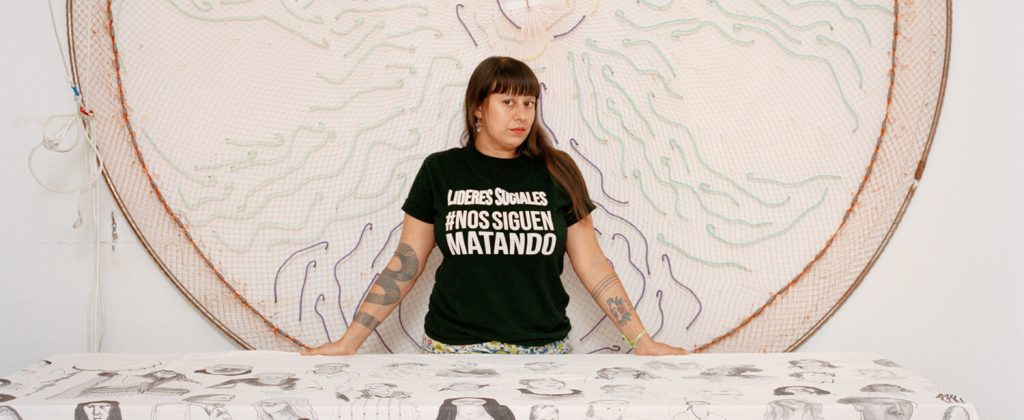
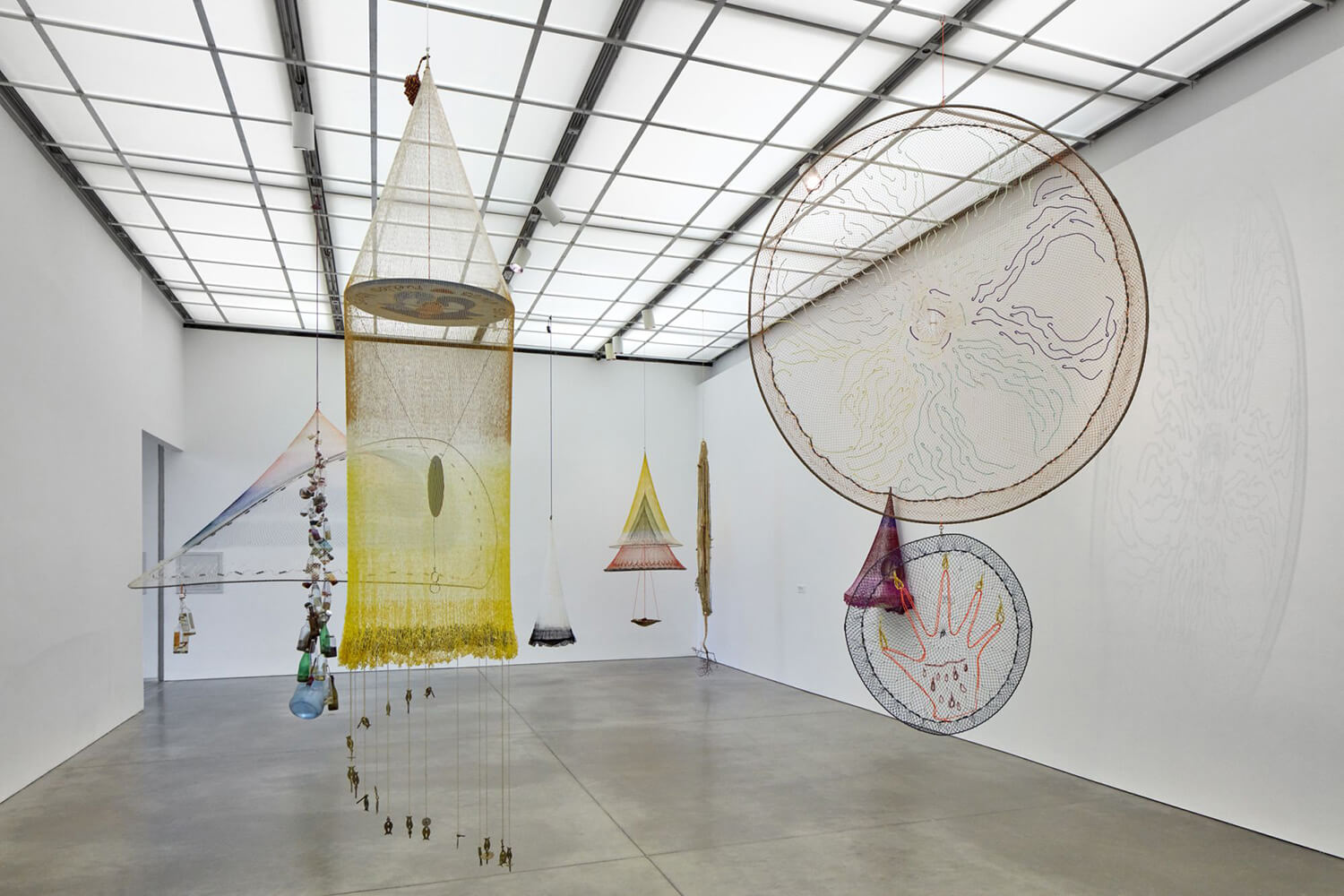
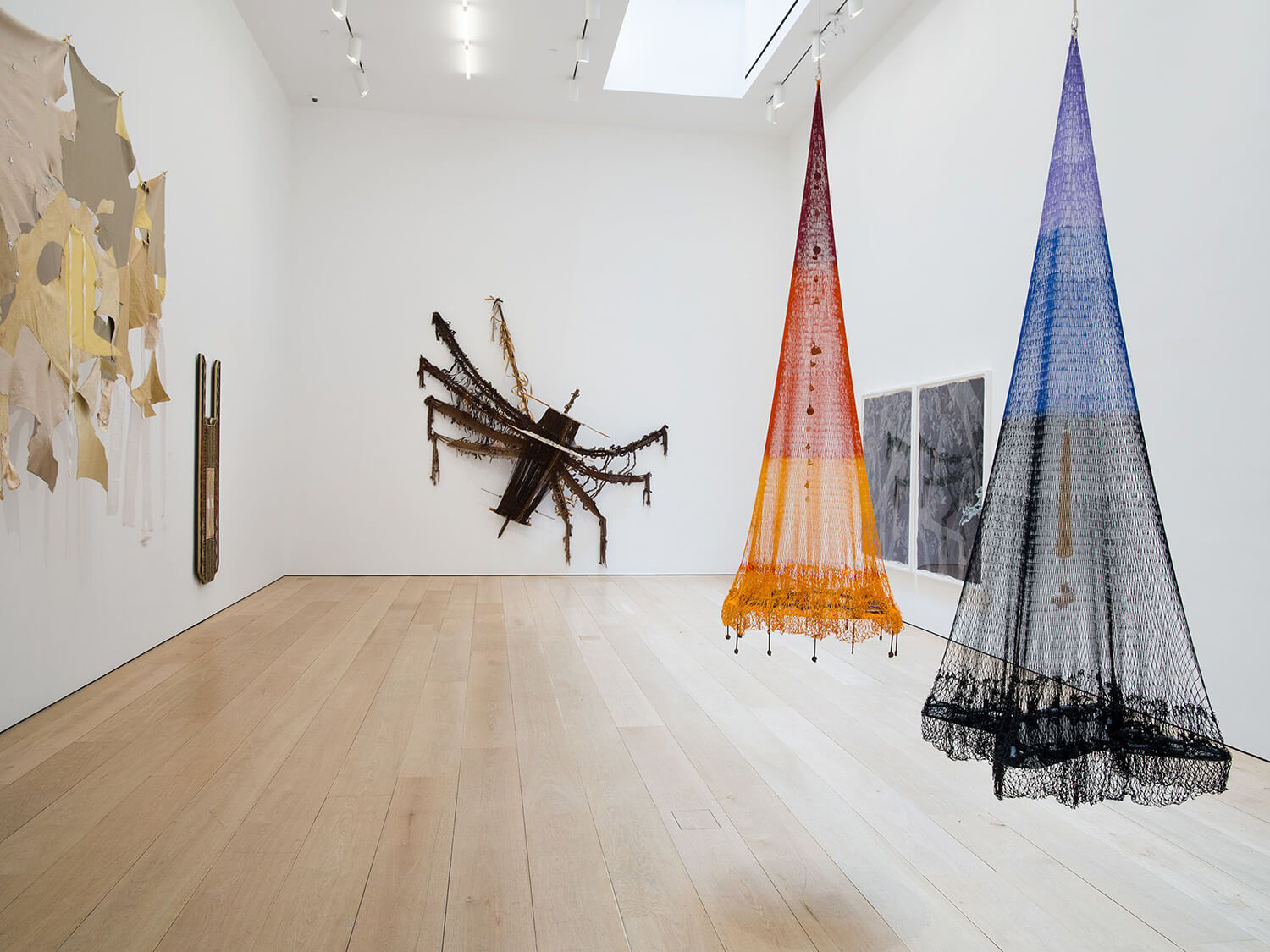
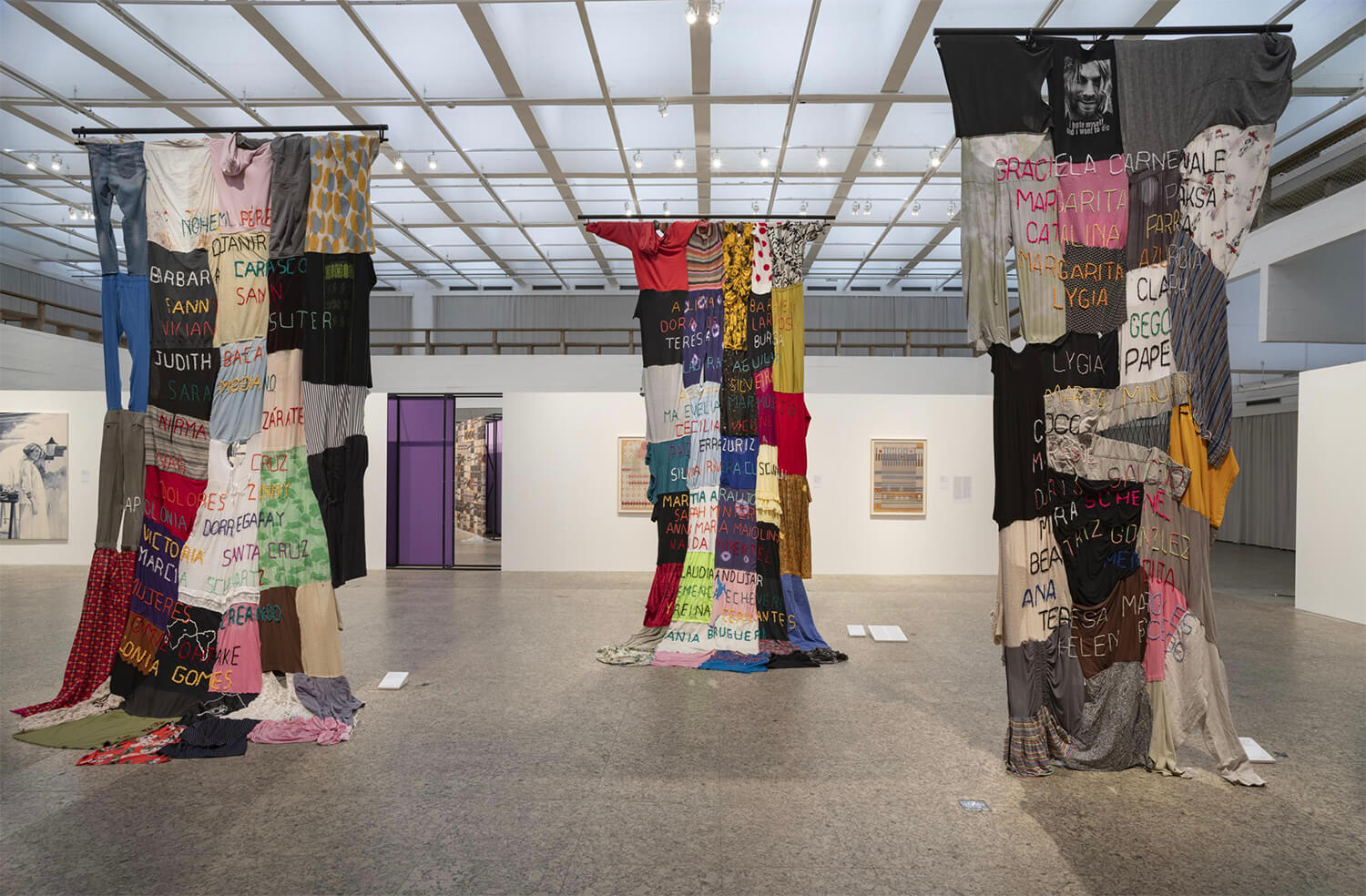
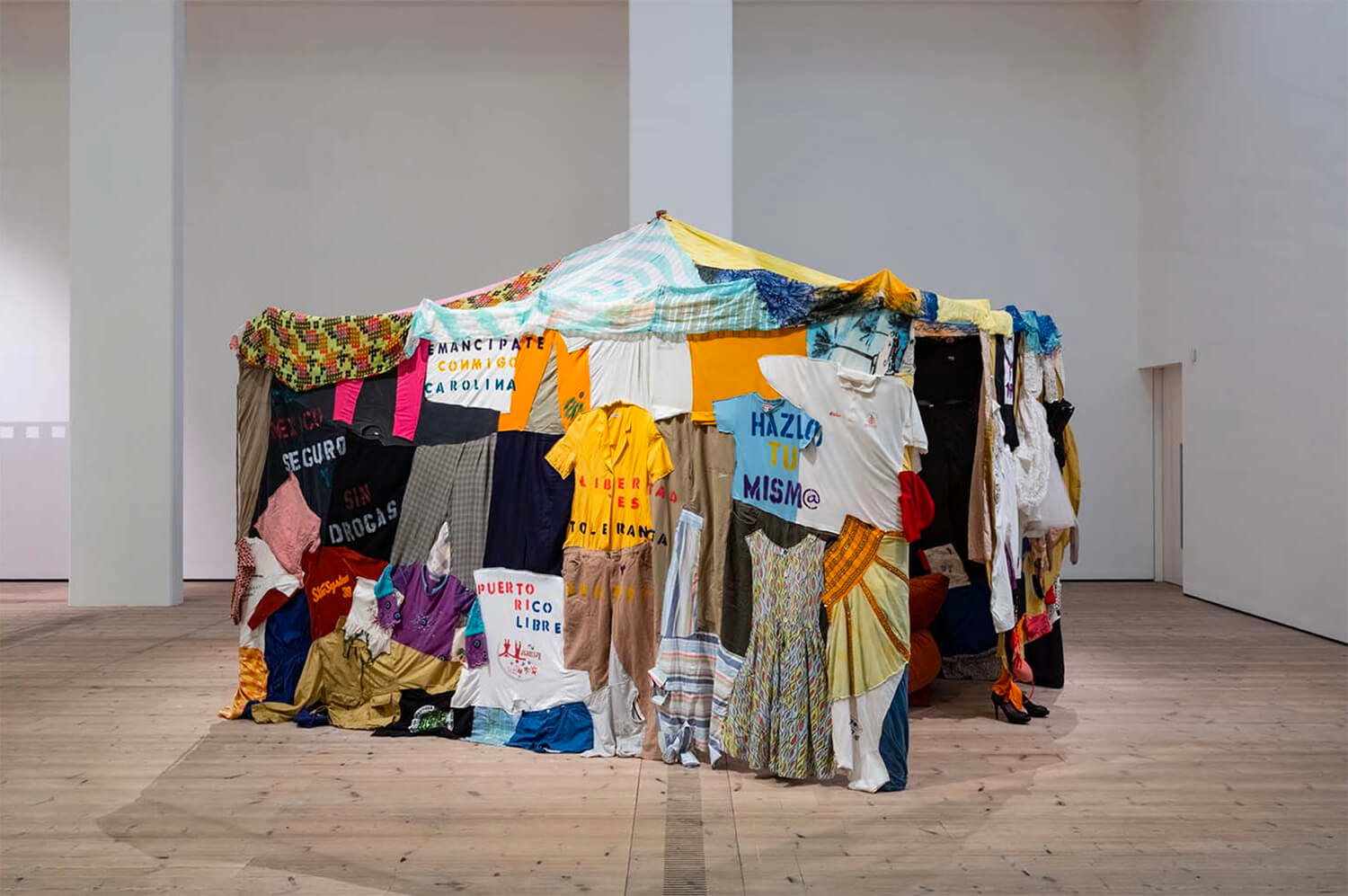
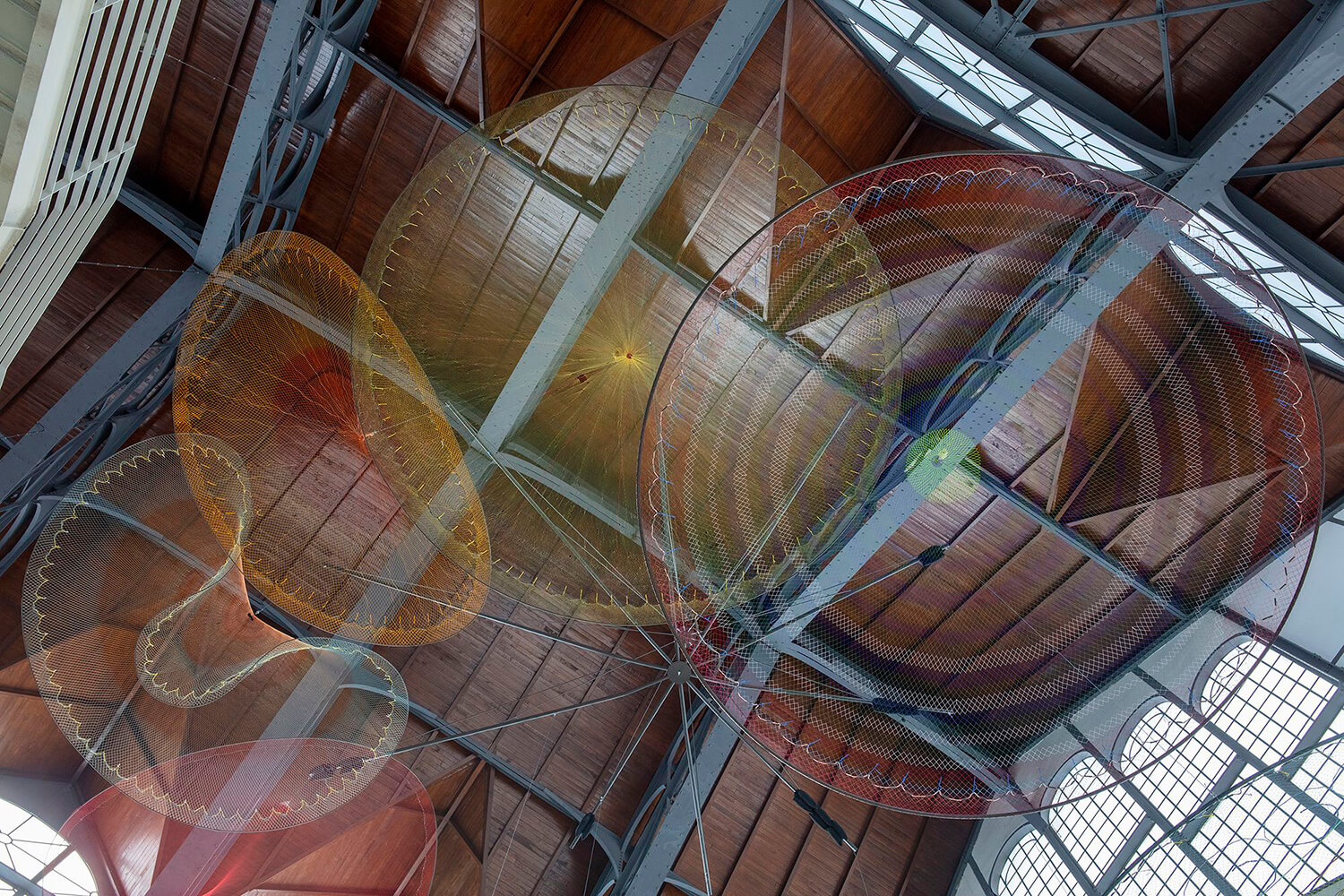
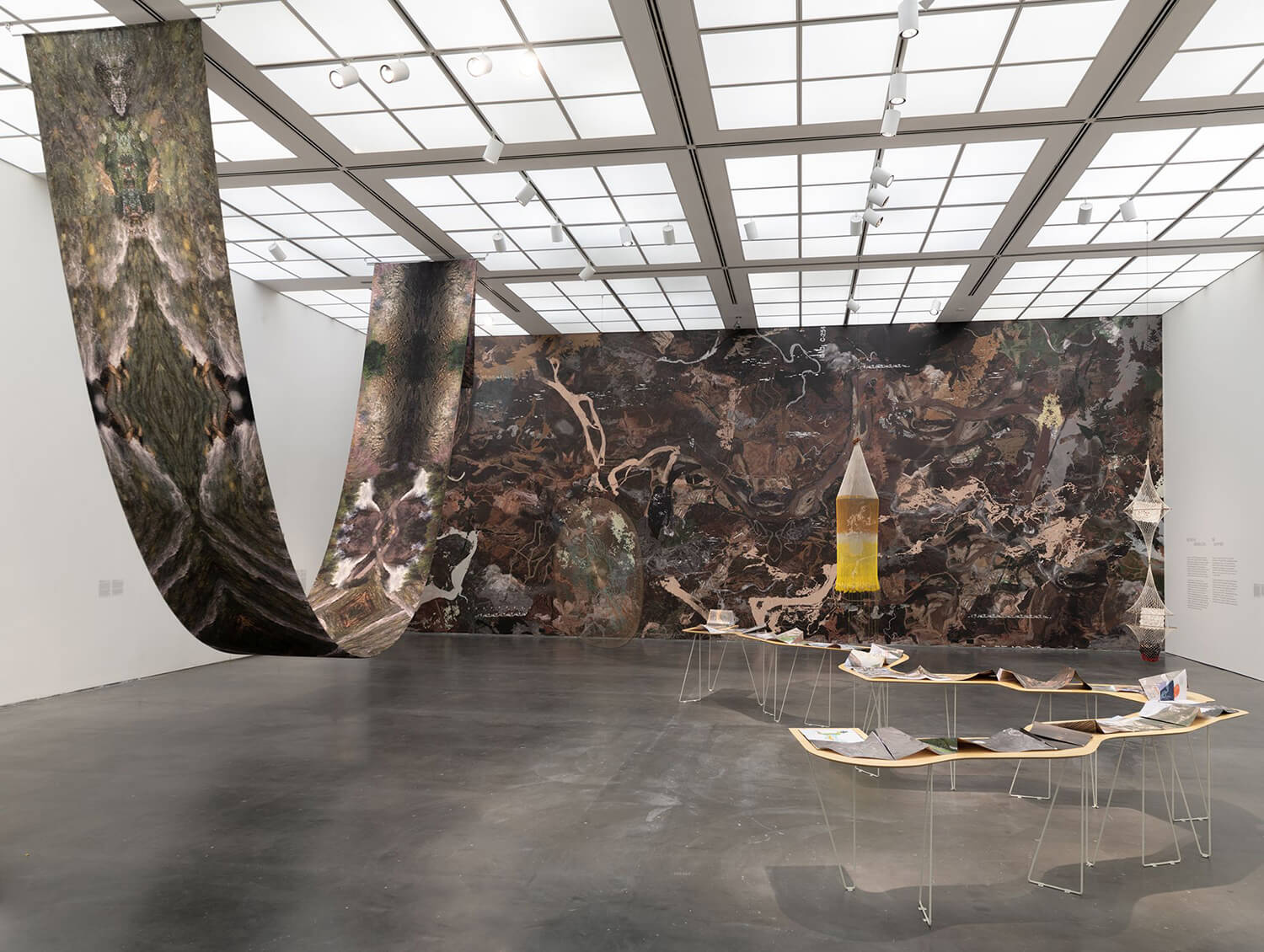




















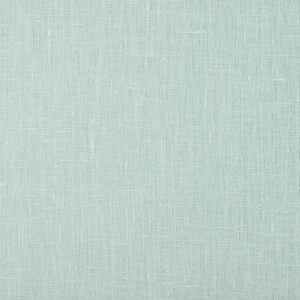


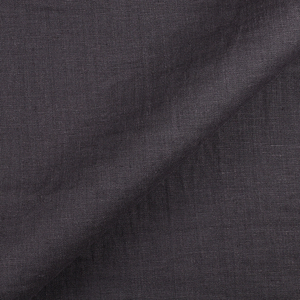



















Leave a comment